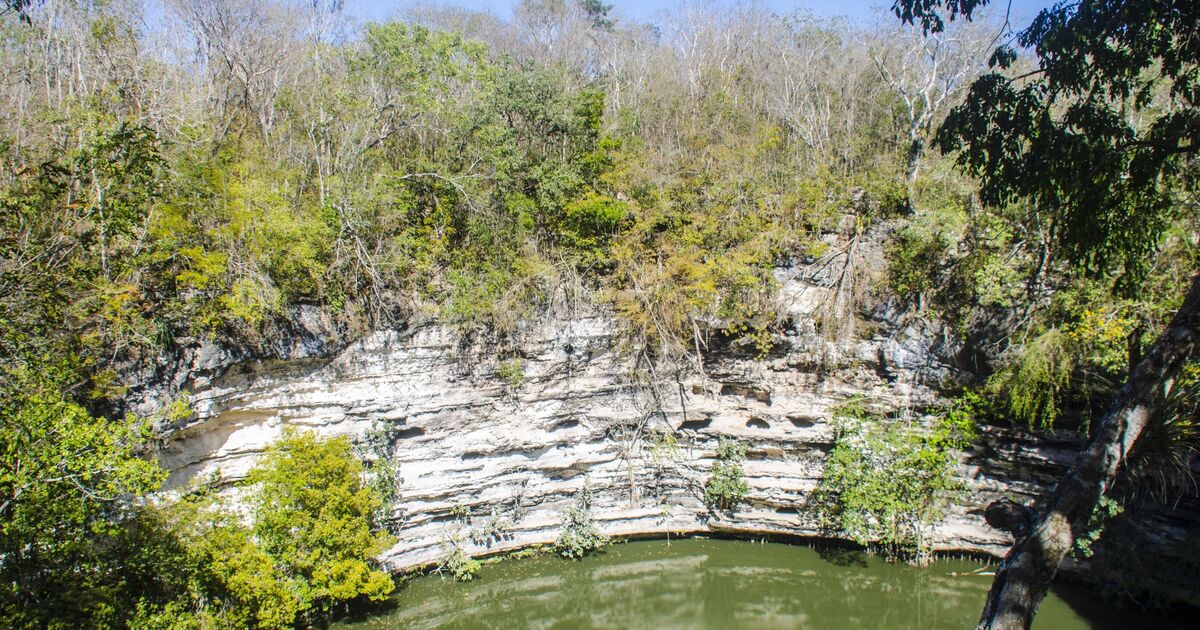The Sacred Cenote is located in southeast Mexico and is one of several water-filled sinkholes found in the ancient city of Chichen-Itza.
Found in the Yucatán Peninsula, this natural cave is a 60-meter-wide limestone sinkhole.
The Sacred Cenote was a symbol of life, spirituality, and cultural heritage for the Maya people and was also a place of human sacrifice.
Here you will find the bones of over 200 people found in the water and is one of many other cenotes found in the Yucatán Peninsula.
Today this compact peninsula and eerie cenote holds much allure and wonder to all those who travel to see it with underground swimming holes, making it a truly unique destination.
The Yucatán Peninsula is roughly 70,000 sq miles in area and is almost entirely composed of porous limestone.
Below these big chunks of porous limestone lies an intricate network of natural tunnels which were carved out through rainwater which had seeped into cracks that later formed caverns and channels.
The Sacred Cenote is surrounded by sheer cliffs which drop to the water table 27 metres below.
Alongside being a sacred water hole for the ancient Mayans, it was also a source of drinking water that’s now used as a swimming pool.
A swim here is reserved for the brave as there are roughly 30,000 artifacts alongside its many bones which were found after numerous archaeological surveys and dredging excavations.
Archaeological investigations in this ancient cenote have found thousands of objects at the bottom of the cenote.
Artifacts discovered included gold, jade, copper, turquoise, obsidian, copal or incense, pottery, rubber, shells, as well as animal bones.
More disturbing however is the amount of human bones found deep below this cenote indicating it was a place of human sacrifice.
According to evidence from Maya mythology, many of these human sacrifices included young victims mostly aged six to 12-years-old.
Many of these human bones found dated back to roughly 500 – 900 CE with some exhibiting signs of deliberate skull shape modification.
“This was definitely a cool experience after learning about the Mayans people and their sacrifices,” wrote one review on TripAdvisor.
Another added: “After a hot day of exploring, it was so nice to take a dip in the cenote.
“The view up was amazing; there was a small waterfall and the sun’s rays hit the water beautifully and you could see fishes too.”












